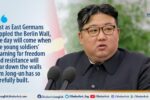As I contemplated speaking, I grappled with the decision of whether to express my thoughts openly.
It struck me that I am not even a Member of Parliament, and the immediate prospect of becoming a minister remains unlikely for me.
No formal documentation surfaced to encapsulate her statements up to that point. Who among us is truly apprehensive about voicing our opinions?
Previously, I held the position of shadow minister of finance, a role assumed during a time when our government transitioned.
Historically, there existed significance in most discussions, a practice often associated with prams.
However, during that period, we relinquished that significance to the Maoists.
Although this may not suffice, it’s improbable they would mount a coherent defense.
I humbly acknowledge that I am not extensively knowledgeable about foreign affairs. My credibility in this arena stems from my overseas education and proficiency in both English and Nepali.
Political instability ensued, depriving me of an active role. Nevertheless, we failed to seize an opportunity to contend, even when Qatar extended the offer.
Even individuals extensively knowledgeable in a certain domain must concede the limits of their expertise.
The phrase “the more you know, the more you realize you don’t know” resonates here. A distinction between articles authored by political figures and those penned by university professors exists, albeit with a few exceptions.
We often seize upon any topic to critique. The geopolitical landscape has undergone transformation, rendering the global political map unrecognizable.
China and Russia’s unequivocal stances stand, as does Brazil’s position on the matter.
This reflection was prompted by Ram Hari Khatiwada’s (previous speaker) reminder that I defended (KP) Oli. Regrettably, Oli diverted Nepal’s discourse onto an inconsequential path, becoming entangled in the north-south dialogue.
Our potential cooperation with China remains remote, primarily limited to a road connection.
Oli’s rhetoric sidestepped this valuable avenue. The frequency of passage through the Rasuwa corridor and the progress of projects like Koshi and Gandaki are pivotal considerations.
It’s crucial to focus on tangible road connections when discussing relations with China. Otherwise, the discourse remains stagnant, mirroring prior discussions.
Often, we find ourselves addressing inquiries without discerning the question’s true source or purpose.
This lack of awareness characterizes our predicament. I fearlessly championed the MCC cause, despite widespread apprehensions.
Likewise, I raised questions about Yuvraj Khatiwada’s plans, particularly regarding funding sources.
A point to ponder is why there was minimal deliberation concerning the necessity of the State Partnership Program (SPP).
This significant matter was swiftly brushed aside. Its complexity surpasses surface appearances.
During a dispute between the second prime minister and the foreign minister, the president seemingly intervened.
However, this scenario warrants a more nuanced understanding, which I shall not delve into at length. The essence of my statement lies in the brevity of explanation.
China and India embody distinct forms of propriety, making misinformation unnecessary.
Physical proximity to China remains improbable. The initial requirement for the BRI was a transmission line from Rasuwagadhi, and this deserves further discourse.
While other aspects exist, addressing this matter should be a priority. India holds a stronger connection to us than China does.
China’s economy currently surpasses 19 trillion US dollars, dwarfing India’s economy at 3.75 trillion US dollars.
The disparity is evident. India is projected to become a major economy by 2050.
Achieving consistent growth at the required pace poses a challenge. Although parity is unlikely, even attaining half of China’s size confers advantages.
Beyond rhetoric, Modi’s influence rests in India’s capital democracy, fostering its strength.
China’s perspective remains unclear. India must maintain an annual growth rate of 3.5% higher than China’s for 27 years to rival its economy—a feat unprecedented in global economics.
Presently, India doesn’t compete on that level; its economy even exceeds California’s.
Our stature is not diminished by Nepal’s size. In terms of population, geography, and economy, we hold a respectable position.
Our population is dwarfed by India’s 40-fold, and our economy is a mere fraction. China’s economy dwarfs ours by 450 times.
Our standing fluctuates between second and third positions. We must leverage this standing, recognizing Nepal’s political potency.
I recall a time in the 90s when I was in the U.S., reading an article in The New York Times.
Where does Nepal stand today? The trajectories of China and India’s ascension do not align with our prospects. We find ourselves enmeshed in a discordant political landscape.
It advocated global peace maintenance—an endeavor we failed to embrace.
Instead, we allowed Bhutan’s predicament to overshadow ours, an approach requiring reconsideration. Our diplomacy requires introspection.
During my tenure as a minister, we endorsed a candidate for Nepal’s 2010 general assembly elections.
Curiously, the chosen candidate found themselves enmeshed in ministerial affairs, leaving my involvement behind.
Political instability ensued, depriving me of an active role. Nevertheless, we failed to seize an opportunity to contend, even when Qatar extended the offer.
Our actions seemed misguided—casting votes before they were cast, only to retract when it proved unfeasible. We must acknowledge our diplomatic shortfalls.
The resonance of Qatar in our discourse uncovers a fissure in our diplomatic endeavors.
Mere dialogue yields little, if any, meaningful progress. Can we afford to let matters deteriorate to such an extent? Nepal’s potential lies in self-sufficiency: if we shift from import dependence to local production, our economy will flourish.
No one questions a French woman’s capabilities when she attains success; similarly, our Nepali workforce should receive recognition abroad.
Unfortunately, our citizens are migrating en masse, and the situation demands attention.
Where does Nepal stand today? The trajectories of China and India’s ascension do not align with our prospects. We find ourselves enmeshed in a discordant political landscape.
(Speech delivered by Nepali Congress leader Dr. Minendra Rizal at an interaction on Challenges and Opportunities in Nepal’s Foreign Policy” at Pavilion Hall in Kathmandu)









Comment